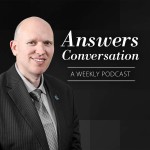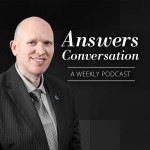By radio@answersingenesis.org (Steve Ham) …read more Read more here: Answers Conversation
By radio@answersingenesis.org (Steve Ham) How Do Birds Fly? …read more Read more here: Answers Conversation
By radio@answersingenesis.org (Steve Ham) …read more Read more here: Answers Conversation
By Creation Moments People and animals recognize their siblings and generally treat them differently than unrelated acquaintances. Scientists wanted to know: do plants do the same thing? read more …read more Read more here: Creation Moments
Listen Now. Part 2 On this episode of ID the Future, Dr. Michael Behe talks with Casey Luskin about recent findings that support his argument in The Edge of Evolution. Dr. Behe explains why Chloroquine, a drug that treats malaria, presents a good opportunity to study the limits of random mutation and natural selection, and how his conclusions inspired so much backlash–including misrepresentation of his argument–from his critics.
By Creation Moments Squid and chameleons change colors. So does the golden tortoise beetle. But it does so in a way never before seen. read more …read more Read more here: Creation Moments
By Creation Moments Behavioral researchers define teaching very specifically. First, of course, a teacher must have pupils. Then the teacher must be less efficient in doing whatever he is doing than he normally would be if he were alone, as a means of showing the pupils how to do the task. And finally, the pupils must learn the task more quickly than they would on their own. read more …read more Read more here: Creation Moments
By Creation Moments Engineers who design vehicles to move through fluids face a quandary. A torpedo-shaped vehicle can move quickly and efficiently through a fluid like water, but it is difficult to maneuver precisely or get to hover. A boxier vehicle can be designed to hover and move with more precision but lacks speed and efficiency. read more …read more Read more here: Creation Moments
Listen Now. On this episode of ID the Future, Casey Luskin reports on a 2009 peer-reviewed paper arguing for the irreducible complexity of two systems vital to bird flight — feathers and the avian respiratory system. The author, Leeds University professor Andy McIntosh, challenges his critics to consider the design hypothesis as a valid scientific assumption “borne out by the evidence itself.”
By Creation Moments It was a moonless night over England. A specially designed radar picks up something that has never been seen before. read more …read more Read more here: Creation Moments
Listen Now. On this episode of ID the Future, Casey Luskin interviews University of British Columbia at Vancouver philosophy faculty member Richard Johns on his paper in the journal Synthese titled “Self-organisation in dynamical systems: a limiting result.” In the paper, Dr. Johns argues that there are limits to the complexity of structures that can be produced by self-organization. Johns shows that Darwinian evolution is actually a type of a self-organizing process, and that it too is limited in the types of biological structures it can produce.
By Creation Moments The evolutionary story of man’s history tells us that it took man tens of thousands of years to figure out he could farm crops for himself. Yet, today we know that some termites, ants and ambrosia beetles actually cultivate food crops. read more …read more Read more here: Creation Moments
By Creation Moments Because half of the radioactive carbon-14 in anything decays to nonradioactive material in 5,730 years, things that are supposedly millions of years old cannot possibly have any. At least that’s what evolutionary scientists always thought. read more …read more Read more here: Creation Moments
Listen Now. On this episode of ID the Future, Stephen Meyer is on The Universe Next Door, talking with host Tom Woodward about criticisms of his latest book, Darwin’s Doubt–now released in paperback with a new epilogue in which Dr. Meyer responds to his critics. Meyer discusses the criticisms of his thesis based from cladistics, as well as other critiques “straw men” critiques. Listen in!
By Creation Moments The metamorphosis of a caterpillar into a moth or butterfly completely restructures the creature internally and externally. Scientists at Georgetown University in Washington D.C. wondered whether that included the caterpillar’s brain as well. read more …read more Read more here: Creation Moments
By Creation Moments Mitochondria generate energy inside each of your cells. They have their own DNA, which is passed directly from mother to child. This fact and the known rate at which mitochondrial DNA mutates has led to some conclusions which would be expected by those who accept the biblical history of mankind. read more …read more Read more here: Creation Moments
By Creation Moments In the book of Judges we read of how “a certain woman” gave the Philistine leader Abimelech a skull fracture when she threw a millstone on him from a tower. Some biblical scholars concluded that no woman could lift a millstone to throw it. Besides, what would a millstone be doing at the top of a tower? read more …read more Read more here: Creation Moments
By Creation Moments What languages did Jesus speak during His ministry on Earth? Of course He spoke Aramaic, since that was the common language of the people He taught. When He read from Isaiah in the synagogue in Nazareth, He would have read it in Hebrew. But did Jesus also speak Greek? read more …read more Read more here: Creation Moments
By Creation Moments Brine shrimp and water bears are tiny animals that are able to basically freeze dry into a state of suspended animation and then return to active life. Scientists have learned that they do this by replacing the water in their cells with a sugar called trehalose. read more …read more Read more here: Creation Moments
Listen Now. On this episode of ID the Future, hear a discussion about a video recently released by Discovery Institute–The Workhouse of the Cell: Kinesin–that reveals the awe-inspiring inner workings of the cell. Kinesins are motorized transport machines that move cellular materials to their correct locations in the cell so they can perform their functions. Kinesins have two feet, or “globular heads,” that literally walk, one foot over another. Known as the “workhorses of the cell,” kinesins can carry cargo many times their own size. Watch the video at YouTube.
Listen Now. On this episode of ID the Future, Stephen Meyer debates Michael Shermer, founding publisher of Skeptic magazine, on the question: Should scientists be skeptical about Darwinian evolution? The debate extends into the topics of whether we should allow criticism of evolution in the classroom; the extinction of Neanderthals, and their differences from humans; and the controversy over global warming. …read more Read more here: id the future
By Creation Moments Most people find the subject of radiometric dating too technical to understand. Until recent years, scientists who believe in creation haven’t had the necessary resources to explore radiometric dating in detail. read more …read more Read more here: Creation Moments
By Creation Moments Charles Darwin knew nothing about genetics. In his day the cell was thought to be filled with nothing more than a watery jell. Darwin also thought that characteristics picked up during life could be passed on to the next generation. read more …read more Read more here: Creation Moments
By Creation Moments Scripture tells us that Solomon’s temple was overlaid with gold inside – the walls, the ceiling and even the floor! Solomon even decorated the Temple with gold, including over two U.S. tons of golden shields. Given the dimensions of the rooms, this would take a huge amount of gold. read more …read more Read more here: Creation Moments
By Creation Moments According to the inflated evolutionary time-scale, the Earth’s moon is 4.5 billion years old. A rocky body the size of the moon would be expected to be geologically active for about 1.5 billion years. This means that for the last 3 billion years the moon has been geologically settled or dead. If it is indeed that old. read more …read more Read more here: Creation Moments
Listen Now. On this episode of ID the Future Logan Gage interviews CSC Fellow John Mark Reynolds, author of the book When Athens Met Jerusalem: An Introduction to Classical and Christian Thought. Listen in as Dr. Reynolds explains the role that classical and Christian thought played in the development of modern science and examines some of the design thinking of ancient philosophers.
By Creation Moments Radioactive carbon, carbon-14, accumulates in all living things when alive. Once they die, half of any given amount of carbon-14 in a once-living thing decays to non-radioactive carbon in 5,730 years. Thus, by measuring the amount of carbon-14 left in a once-living thing, scientists can get a rough idea of when it died. It can be used to date things that are only thousands of years old, not millions. read more …read more Read more here: Creation Moments




























